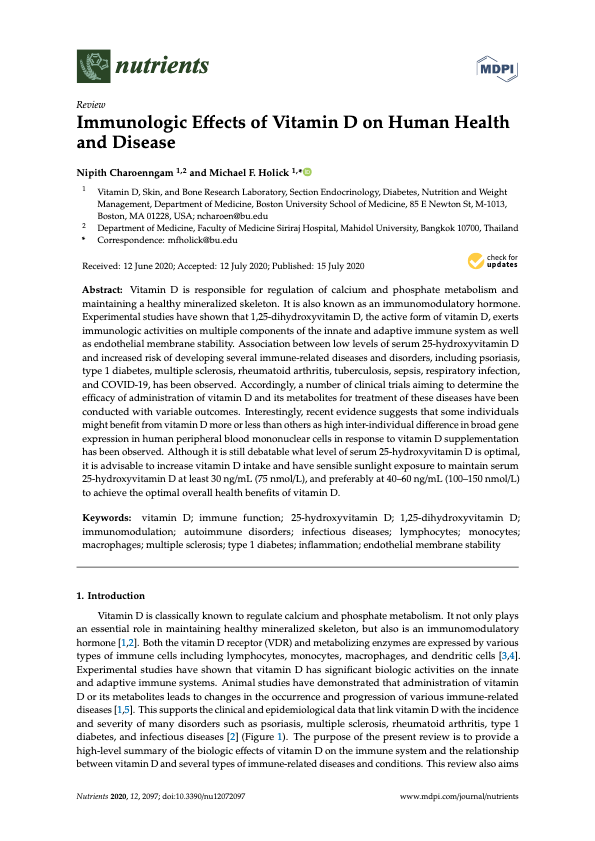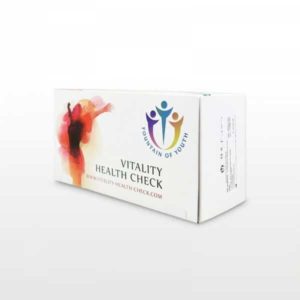



VHC Vitamin-D live demonstration at the international sports tradeshow FIBO 2018 in Cologne.
A video blog report produced in April 2018 by the Austrian video blog ‘Conny Pure’, focussing on fitness and nutrition related news for sports professionals
Conny Pure (Conny Hörl) – Nutritionist and expert for healthy live style – Conny Hörl – Homepage
For some reason two different units are used in parallel to describe 25(OH)-Vitamin-D blood concentration, namely Nanogramm per Milliliter [ng/ml] and Nanomol per Liter [nMol/l]. As a result there is some likelyhood of confusion when comparing different diagnostic test results or reading scientific literature. Allways check the units, when comparing lab results or Vitamin D related lectures, publications, guidelines or recommendations.
However, the two units Nanogramm per Milliliter [ng/ml] and Nanomol per Liter [nMol/l] can be easily converted by either multiplying or dividing with the factor 2.5 (1 ng/ml = 2.5 nMol/l).
[CP_CALCULATED_FIELDS id=”10″]
Under good conditions our body produces some 10.000 international units Vitamin D from sun exposure within just a few minutes day by day. This seems quite a huge amount, but in fact our body consumes most of this Vitamin D within the next 24 hours. Many experts state that we have a minimum daily consumption of 6.000 i.u. Vitamin D to keep all Vitamin D dependant regulatory systems on a good level.
As a consequence the blood-concentration of 25-OH-Vitamin-D may drop quite fast if the self-production goes down (e.g. in winter) and is not refilled by supplementation. Another factor, that contributes to the significant drops in blood Vitamin-D levels non-adequate supplemented people is the quite limited half-time of the Vitamin-D main metabolites. For best consultation, regarding indiviudual Vitamin D supplementation and monitoring it is thus important to minimize the time to result of a Vitamin D test.
[qcld-ilist mode=”one” list_id=”2660″ upvote=”off” main_title=”0″ embed_option=”1″ boxed_layout=”1″ column=”1″ style=”Infographic-style-04″]
1. Vitamin D comes from sun exposure, not your diet.
When you expose your skin to the sun, your body makes vitamin D, lots of it. On the other hand, there isn’t much vitamin D found in foods. This means that getting enough vitamin D depends on getting frequent and moderate sun exposure, not eating a balanced diet.
[table id=6 /]
2. Scientists and doctors agree that at least a third of the world is deficient in vitamin D.
Some scientists think even a greater percentage are deficient. This is because we live in an indoor society, more so now than ever before in human history.
3. If you don’t get frequent moderate sun exposure or take a vitamin D supplement, you’re likely deficient in vitamin D.
Some people get tested for vitamin D by their doctors and are shocked to find out they’re deficient. But unless you get frequent moderate sun exposure or take a supplement, it shouldn’t come as a surprise at all. These are the only reliable ways to get the vitamin D your body needs. While there is a little bit of vitamin D in fish and fortified milk, there isn’t enough to make sure you’re sufficient in vitamin D.
4. Moderate midday sun exposure is the best for making vitamin D.
In order to make vitamin D, the sun needs to be high up in the sky, high enough so that your shadow is shorter than you. If your shadow is longer than you, the sun isn’t intense enough to help your body make vitamin D. Midday sun exposure is best; this is when the sun is high and your shadow is shorter than you are.
5. You don’t need to burn to make vitamin D.
To make good amounts of vitamin D, you should spend half the time out in the sun that it would take for your skin to turn pink.
6. Vitamin D supplements are a good option in the wintertime to get the vitamin D you need.
In the northern hemisphere, the sun starts focusing more on the southern hemisphere. The sun’s rays strike the northern hemisphere at a different angle, an angle that isn’t quite as intense as during the summer. In consequence, your body has a harder time making vitamin D in the winter compared to the summer. The further north you live, the more difficult it is to make vitamin D in the winter.
Remember you can always check to see if you’re making vitamin D by looking at your shadow. If it’s longer than you, you aren’t making much vitamin D. And in the winter, your shadow is often longer than you.
Have no fear that you can’t make vitamin D! Vitamin D supplements are a good option in the wintertime. Low-pressure sunbeds and UV light units are also options to help you make vitamin D during the winter.
7. Vitamin D is important for many things, including your bones, heart, respiratory system, brain, and likely cancer prevention.
Scientists are still discovering the effects of vitamin D on disease prevention, but researchers believe it may play a central role in preventing autoimmune diseases like multiple sclerosis and type I diabetes, preventing cancers like breast and colon, and keeping the heart healthy, by influencing muscle function and hormones involved in heart health.
8. Consider getting tested for vitamin D, to see if you’re getting enough.
Vitamin D tests are pretty easy. You can ask your doctor to add it to your next routine blood panel.
While not all doctors agree how much vitamin D you need, a group of 42 of the world’s top vitamin D researchers think the optimal vitamin D level is between 40-60 ng/ml [100-150 nmol/l] or, a level the majority of northern populations fall well below.
[SOURCE: Vitamin-D Council, www.vitamindday.net]

By end of June 2017 the VHC Vitamin-D quantitative Vitamin-D test has been CE marked and we produced the first batch in order to serve our early bird customers. The success of the VHC Vitamin-D was bejond our initial expectations so far. We have been sold our several times and are producing the fourth bath right now.
In parallel to scaling up the production of the VHC Vitamin-D from batch to batch, we work closely together with our partners and customers to offer them optimal training and support.
For more information about the VHC Vitamin-D test and its handling, please follow this link.